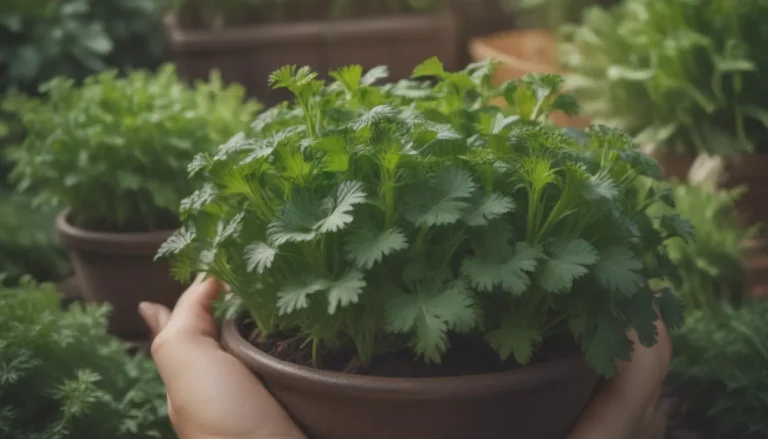The Ultimate Guide to Growing and Caring for Japanese Andromeda

Japanese andromeda is a stunning evergreen shrub that is highly sought after for its beautiful bell-shaped flowers that bloom in early spring. If you’re looking to add this gorgeous plant to your garden, you’ve come to the right place! In this in-depth guide, we will explore everything you need to know about growing and caring for Japanese Andromeda to ensure it thrives in your yard.
Why Japanese Andromeda?
Japanese andromeda, also known as Andromeda japonica, is a member of the Ericaceae family and is related to other popular landscape shrubs such as rhododendrons, azaleas, mountain laurel, and winter heath. This slow-growing shrub adds about 1 foot per year and is valued for its glossy, evergreen leaves that provide winter interest in the garden. Its dangling racemes of flowers add a pop of color to the landscape, making it a favorite among gardeners.
Some Key Points to Keep in Mind:
- Japanese Andromeda is toxic to humans and pets, so be cautious when planting and handling the plant.
- This shrub thrives in shaded areas, making it a great choice for gardens with limited sunlight.
- The flowers of Japanese Andromeda have a unique scent that some find pleasant, while others may not enjoy it.
Japanese Andromeda Care Tips
Taking care of Japanese Andromeda is relatively straightforward, but there are a few key factors to consider to ensure its health and vitality in your garden.
Light
While Japanese Andromeda can survive in shady conditions, it thrives in full sun to partial shade. For optimal flowering, provide some sunlight to the plant.
Soil
Ensure the soil is well-draining to prevent waterlogged conditions, as Japanese Andromeda does not do well in soggy soil. Keep the ground evenly moist to support healthy growth.
Water
Japanese Andromeda has moderate water needs and should be watered when the top 3 inches of soil feel dry. Be mindful not to let the plant dry out, as it does not tolerate drought well.
Temperature and Humidity
This shrub prefers moderate temperatures and can tolerate a wide range of humidity levels. Avoid exposing it to extreme heat or cold.
Fertilizer
Feed Japanese Andromeda with a fertilizer designed for acid-loving shrubs to promote healthy growth. Look for a fertilizer that is suitable for plants like azaleas, as it can be used for Japanese Andromeda as well.
Types of Japanese Andromeda Cultivars
In addition to the species plant, several cultivars of Japanese Andromeda have been developed, each with unique characteristics and features. Here are some popular cultivars to consider for your garden:
- ‘Compacta’
- ‘Forest Flame’
- ‘Mountain Fire’
- ‘Red Mill’
- ‘Valley Rose’
- ‘Variegata’
These cultivars offer a range of colors and foliage variations, adding diversity to your landscape design.
Pruning Tips for Japanese Andromeda
Japanese Andromeda typically maintains an attractive shape without much pruning. However, periodic trimming to remove dead or diseased branches is essential for the plant’s health. Keep an eye on the foliage and remove any overgrown or unsightly growth to maintain its appearance.
Propagating Japanese Andromeda
While Japanese Andromeda can be grown from seed, propagation from cuttings is a more efficient method. Take cuttings from healthy plants and root them in a suitable growing medium to establish new plants.
Potting and Transplanting Japanese Andromeda
When planting Japanese Andromeda in a pot, choose a container with adequate drainage and use well-draining potting mix to prevent waterlogging. Repot the plant as needed when the roots outgrow the container to ensure proper growth.
Overwintering Japanese Andromeda
Japanese Andromeda is winter hardy to USDA zone 5 but may need protection in colder regions. Insulate container plants during winter to protect the roots from freezing temperatures and drying winds.
Common Pests and Diseases
Japanese Andromeda is susceptible to fungal diseases and pests such as the andromeda lacebug. To prevent these issues, ensure good air circulation around the plant, and apply necessary treatments like fungicides or pesticides when needed.
How to Encourage Blooming in Japanese Andromeda
Boost flowering in Japanese Andromeda by providing adequate sunlight and proper care. Ensure the plant receives enough light to promote blooming and vibrant growth. Consider placing potted Japanese Andromeda outdoors during the summer for optimal growth.
If you’re looking for a similar plant for shaded areas, consider mountain andromeda as an alternative. It offers similar characteristics and is deer-resistant, making it a great choice for wildlife-friendly gardens.
I hope this comprehensive guide has equipped you with the knowledge and resources needed to grow and care for Japanese Andromeda successfully in your garden. With the right care and attention, this beautiful shrub will thrive and enhance the beauty of your outdoor space. Happy gardening!





